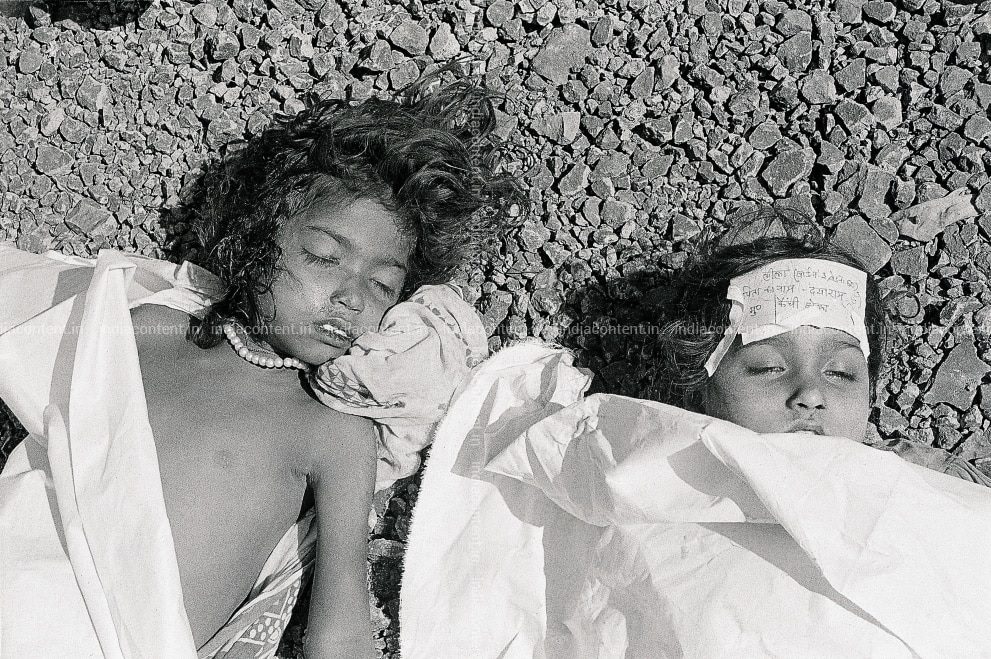
35 years ago, in the world’s worst industrial disaster, over 25,000 people were killed after methyl isocyanate leaked on the disastrous night of December 2-3, 1984 from the pesticide plant of Union Carbide India Limited (UCIL) in the city of Bhopal, Madhya Pradesh.

Bhopal Gas Tragedy History
This industrial calamity ensued on the night of 2nd – 3rd December 1984 at UCIL (Union Carbide India Limited) pesticide plant. The plant released the highly toxic substance named MIC (Methyl Isocyanate) gas which engulfed the whole city and became a cause of burning sensation in the lungs of the dormant people. Thousands of people instantly succumbed after the effects of the poisonous gas. Over 5,00,000 people in the city and nearby inhabitants were exposed to the toxic gases.
According to the debate between the Indian Government and the local protestors, the slack management and prolonged maintenance shaped a situation where the routine pipe maintenance precipitated a slipstream of water into a MIC tank, sparking the disaster. Union Carbide Corporation says that the water entered the tank through the act of treachery. As a result of the disasters, 15,000 deaths have been witnessed over the years. Thousands of survivors and their heirs have also endured from the respiratory diseases and from ravage to internal organs and immune systems due to the toxic material remains.
It was India’s first major industrial mishap when people were seen running on the streets, vomiting and perishing. The US-based international company UCC owning a subsidiary UCIL extended very little support in this human tragedy. Even after the millions of deaths, the Bhopal unfurled many others in the following years. There was a big increase in the maladies like eye irritation, blindness, tuberculosis, anaemia, gastrointestinal, neurological, immune systems and several other diseases.
The two more variables were compounded – one, due to the exposure of deadly gases, the children born after the mishap were also became the victims of the dreadful diseases; two, chemical wastes which were deposited in and around the premises of UCIL factory polluted the water that people drink.

What Went Wrong In Bhopal Gas Tragedy
The pesticide plant of Union Carbide India Limited was located in the densely populated part of the city. This plant was set up in 1969 in which UCC has 51% of stake and rest is with the state authority. A chemical known as Methyl Isocyanate was used as a raw material for the production of pesticide. Therefore, the factory had a large stock of MIC stored in it.
After the big catastrophe, the CBI had forbidden the interviews of the plant employees and opposed the meaningful access to the plant records. However, posterior to the regulation of a U.S. bailiff in December 1985, the Indian Government provided copies of plant records to UCC that had been confiscated and allowed the access to plant employees during the discovery from UCC. UCC’s investigators confirmed their conclusion after conducting 70 interviews and examining 70,000 pages of plant records and documentation that the MIC tank was introduced with a large amount of water in it which was the prime cause of chemical reaction (which resulted in the build-up of Carbon Dioxide) that forced the pressure release valve to open and allowed the gas to spill all over the city.
On the horrific night of 2nd December 1984, while the cleaning progress was going through, a leak was noticed by the employees during pipeline washing and casual remedial actions were taken. Nobody knew that the early hours of December 3rd would be carrying a swirling wind of poisonous grey clouds from the Union Carbide Plant in Bhopal, Madhya Pradesh (India). The cadavers of humans and animals had obstructed the streets, leaves colour turned black and a smell of burning chilli peppers was spread in the air. This nightmare had no end as it caught all the neighbourhood areas too with its poisonous attack. Future generations might also get affected by the aftermaths of this incident.

The sharp fall in the demand of pesticide in the 1980s led to the excess inventory of Methyl Isocyanate gas to be stored in the factory which could not be disposed of. Because of this, the proprietor of the company initiated cost-cutting and reduced regular maintenance. He employed fewer people and started using lower-grade steel parts. Closure of the plant was also being considered at that time. Because of the surplus amount of material in the market, the production was stopped at the plant.
Bhopal Gas Tragedy Images on India Content
The India Content website has a huge stock of images related to Bhopal Gas Tragedy. The pictures are available in three sizes – small, medium and large.
You can purchase various other content images from the https://www.indiacontent.in